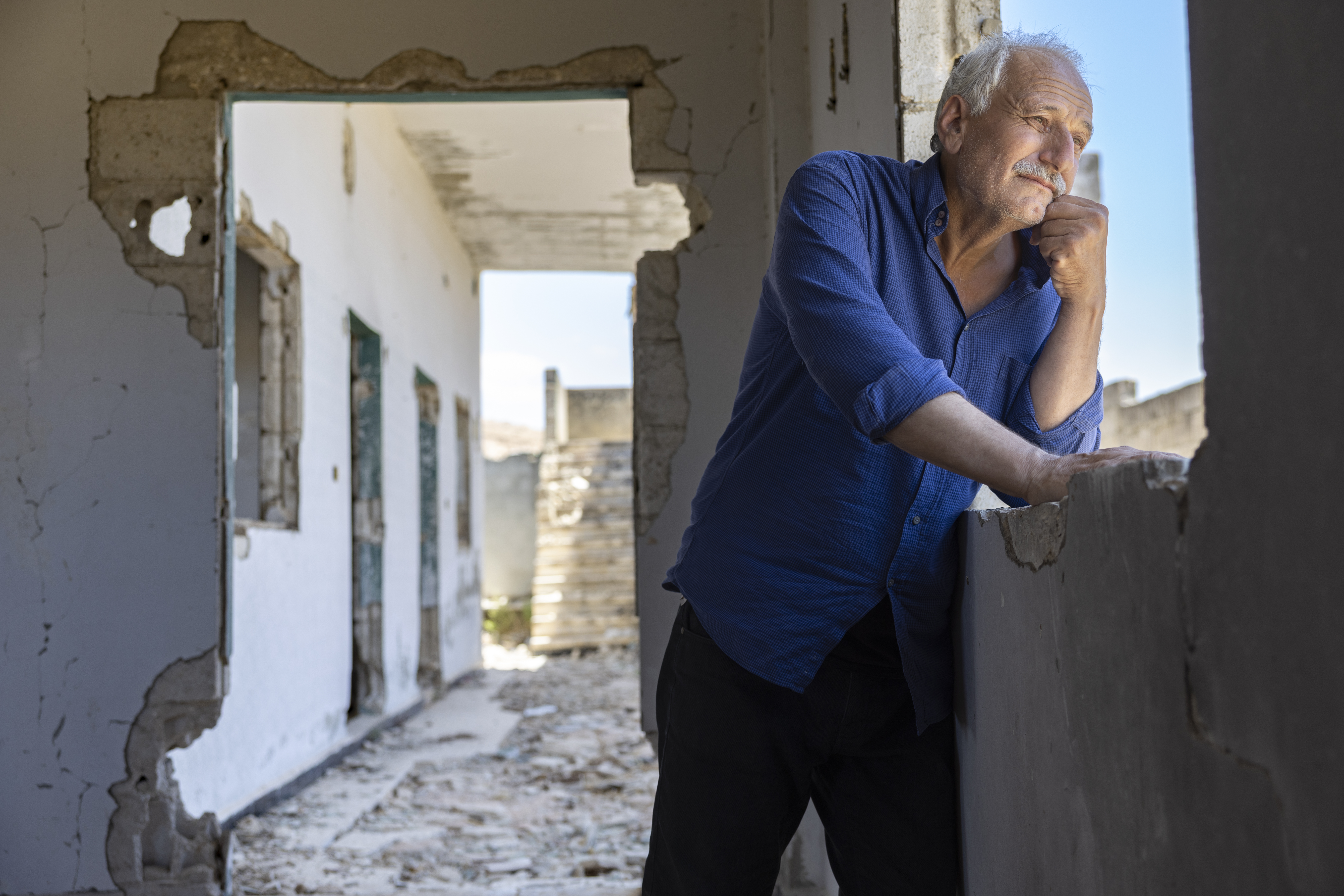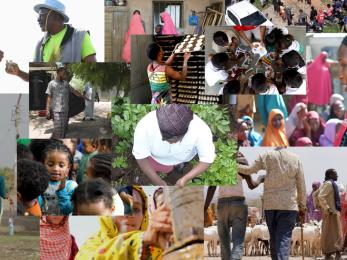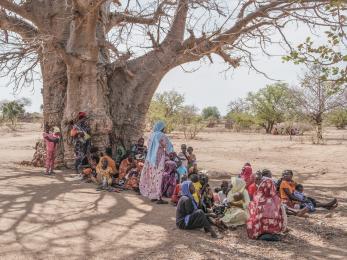Recovery and resilience: 20 years after the Indian Ocean tsunami
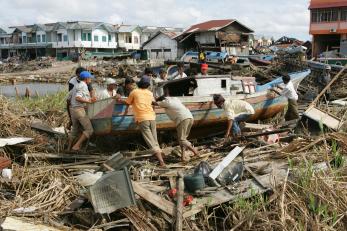
“The devastation was unimaginable,” said Arianto Andrian, describing what he experienced in Indonesia as he recalled the catastrophic Indian Ocean earthquake and tsunami that struck the shores of South and Southeast Asian countries on December 26, 2004. That morning, Arianto had planned to meet his friends at a Ulee Lheue beach, when the earth beneath him shook violently, knocking people to the ground and toppling buildings. Arianto and a friend hopped on his motorbike to head to the city centre, struggling to maintain control as the tremors continued.
“When we reached the bridge near the Grand Mosque, I saw people fleeing in panic, shouting that the water was rising,” said Arianto. “We had never heard the word ‘tsunami’ before, and I had no idea what was happening.” Arianto was in Banda Aceh, the closest major city to the epicentre of the magnitude 9.62 earthquake off the west coast of Aceh province in Sumatra. With an estimated death toll of around 170,000, Indonesia was the worst affected country. Across 14 countries, more than 230,000 lost their lives and millions were displaced. The natural disaster was one of the world’s deadliest in history.
In the wake of the tsunami, and the deluge of wreckage that washed into communities, Arianto waded through waist-deep water in search of family. Unpredictable aftershocks occurred for days afterwards. “[The smell of] decomposing bodies filled the air, and there were fears of disease outbreaks,” said Arianto. “Volunteers worked tirelessly to collect bodies for mass burials.”
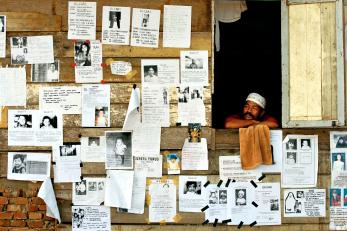
Four days later, Arianto made his way to Meulaboh to check on family when he met Mercy Corps team members who asked to rent this motorbike in exchange for fuel. He began to assist Mercy Corps with translating for survivors who spoke Acehnese and was eventually offered a job on the team. Arianto went on to work with Mercy Corps for 20 years, and his first assignments were to help his community recover from the devastation of the earthquake and tsunami.
“The 2004 tsunami was a turning point in global disaster response, leading to groundbreaking efforts in disaster risk reduction and emergency preparedness,” said Ade Soekadis, Mercy Corps Executive Director for Indonesia. Twenty years ago, as one of the first organisations on location to offer aid, Mercy Corps launched its largest-ever disaster response. It also marked a turning point that has shaped how we approach disaster preparedness, response, and resilience today.
Inclusive and innovative emergency response
“The early days of working with Mercy Corps in post-tsunami Aceh were incredibly challenging,” said Dasci Fadihu, who had been helping with the recovery effort in the immediate aftermath and eventually joined Mercy Corps in late 2005. The situation was dire with limited electricity, fuel scarcity, and a dearth of lodging or workspace.
In the days, weeks, and months following the disaster, Mercy Corps delivered critical lifesaving supplies like food rations, clean water, health care support, and temporary shelters. In Aceh, we distributed tools and paid locals to clear debris, repair roads, and rebuild public facilities like schools and healthcare facilities—providing a lifeline to more than 423,000 people in 64 villages.
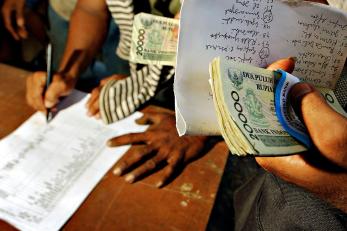
Mercy Corps also provided cash aid, helping communities to buy essential items that met their most urgent need—an approach that is now standard in humanitarian responses that was groundbreaking 20 years ago. Cash assistance offered greater flexibility and autonomy for communities, setting a new benchmark in humanitarian aid that has since been widely adopted. Now a standard of our disaster response toolkit, cash assistance helps people recover in ways that best work for them. And it is effective in part because it can be quickly acquired and distributed, while also keeping local markets afloat during a critical time.
“[Mercy Corps emergency response] taught me that effective humanitarian response requires more than just immediate relief—it involves a nuanced understanding of the local context, strategic coordination, and a genuine commitment to supporting communities in rebuilding their lives,” said Dasci. For instance, the cash-for-work programme provided an opportunity for the community to convene and support one another while delivering vital services. Participants helped clear mud from homes and schools, removed debris, and helped deliver supplies. Many participants used their earnings to start small businesses, like selling vegetables, which helped accelerate economic recovery.
Piva Bell, who began as an intern during the 2005 recovery efforts and is now a Mercy Corps regional programme advisor, saw how deeply the disaster affected community members. She supported a mental health activity to help parents and children heal from the trauma they experienced. It was almost eight months after the tsunami when Mercy Corps organised games and activities for several villages in Aceh, to bring people together during a difficult time. “I had the opportunity to monitor these activities across various villages,” said Piva. “It was heartwarming to see previously solemn and withdrawn community members become cheerful, active, and engaged during the competitions.”
Mercy Corps approach to supporting communities in the wake of disasters was inclusive of the different types of aid people may need. From essential supplies to mental health support, partnerships with the community helped to identify the type of aid they received and needed most.
Seeds of long-term recovery
In the decade that followed, partnerships with communities across Indonesia focused on strengthening disaster preparedness. Together, Mercy Corps worked with communities to develop risk management plans, rebuild critical infrastructure like schools and health clinics, and supported over 1,000 farmers with seeds and tools to restore devastated rice fields.

Additionally, Mercy Corps worked with local financial institutions to provide funding to small business owners in need. “One of my most memorable experiences was supporting a clothing seller at the Aceh Market,” said Dewi Hanifah, who was part of a team supporting entrepreneurs to recover after the tsunami. The clothing seller was one of many small business owners who grew his business with the support of the loan. By embedding disaster readiness into local government strategies and helping to rebuild livelihoods, the initiative laid the groundwork for resilience.
Locally led disaster preparedness builds resilience
Since 2007, Mercy Corps launched a dedicated team of emergency responders, delivering lifesaving relief in the wake of more than 20 disasters, including volcanic eruptions, earthquakes, and tsunamis. Beyond immediate aid, Mercy Corps has collaborated with local governments to create evacuation maps, construct resilient facilities, and deploy cutting-edge early warning systems to strengthen disaster preparedness. “Today, communities in disaster-prone Indonesia are undeniably safer and better able to withstand crises than they were two decades ago, thanks to locally led efforts like community-based disaster response teams and regular evacuation drills,” said Ade. “If a similar tsunami struck Aceh today, I can confidently say communities would fare far better.”
Arianto, who continued to work with Mercy Corps since that large-scale emergency response 20 years ago, reflected on his part in supporting the efforts in 2004. “It has been the most transformative journey,” said Arianto. “I’m proud to have been part of rebuilding my community.” The focus remains clear for Mercy Corps: supporting communities to cope, adapt, and thrive in the face of future crises.
